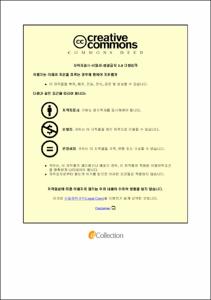재생 굵은골재를 사용한 콘크리트의 양생조건이 압축강도에 미치는 영향
- Alternative Title
- Effect of Curing Conditions on Compressive Strength of Concrete Using Recycled Coarse Aggregates
- Abstract
- The purpose of this study is to evaluate the effect of the compressive strength of concrete upon changing the water content or curing conditions of regenerated thick aggregates. Curing conditions were classified into two types: underwater curing and atmospheric curing after 1, 3, and 7 days, and the water content of regenerated thick aggregates was classified into absolute dry state, surface dry saturation state, and wet state. In addition, the water/bonding material ratio was also changed to compare and evaluate its effects.
The compressive strength of concrete using recycled aggregates was found to be 83% to 87% lower than that of concrete using natural aggregates. It is considered that fine cracks with a lot of aggregates through the high absorption rate of regenerated thick aggregates and low drying unit weight, and it is believed that the strength of concrete is reduced due to the destruction of the aggregates.
For both natural and recycled aggregates, the compressive strength decreased as the atmospheric curing period increased, and the reduction rate was similar. This is thought to have decreased the compressive strength because insufficient moisture was supplied during the curing period, and the type of aggregate is not considered to have much influence on these conditions.
In the case of wet curing, using an aggregate in a surface dry saturated or wet state was disadvantageous for compressive strength, because a moisture gel is formed on the surface of the aggregate when using an aggregate having a high absorption rate, thereby degrading adhesion. In the case of atmospheric curing, the moisture inside the concrete evaporates during the curing period, so the moisture required for hydration is insufficient, but in the case of wet or surface dry saturation, the water contained in the aggregate is used for hydration, resulting in relatively high strength. Therefore, when using recycled aggregates, it is necessary to create a curing environment capable of effectively managing moisture during the curing period of concrete.
The degree of effect of the moisture supply conditions on the compressive strength according to the change in the water/binder ratio during curing was similar.
- Issued Date
- 2023
- Awarded Date
- 2023-02
- Type
- Dissertation
- Alternative Author(s)
- Shin, Min-Gun
- Affiliation
- 제주대학교 대학원
- Department
- 대학원 토목해양공학과
- Advisor
- 박상렬
- Table Of Contents
- I. 서 론 1
1. 연구배경 1
2. 연구 내용 및 목적 2
3. 논문 구성 3
II. 기존 문헌 연구 5
1. 함수상태에 따른 순환골재 콘크리트의 특성 5
2. 양생조건이 큰크리트의 압축강도에 미치는 영향 7
III. 실험 계획 10
1. 실험변수 10
2. 사용재료 11
1) 시멘트 11
2) 잔골재 11
3) 굵은 골재 12
3. 실험체 제작 13
1) 배합비 13
2) 제작 과정 14
3) 양생 15
4. 실험 방법 16
IV. 실험결과 및 분석 17
1. 실험결과 17
2. 실험결과 분석 18
1) 골재 종류에 따른 흡수율과 단위중량 18
2) 골재 종류에 따른 양생 조건의 영향 20
3) 골재의 함수상태에 따른 양생 조건의 영향 26
4) 물/결합재 비에 따른 양생 조건의 영향 31
V. 결 론 37
참고문헌 39
- Degree
- Master
- Publisher
- 제주대학교 대학원
- Citation
- 신민건. (2023). 재생 굵은골재를 사용한 콘크리트의 양생조건이 압축강도에 미치는 영향.
- Appears in Collections:
- General Graduate School > Civil and Ocean Engineering
- 파일 목록
-
-
Download
 재생 굵은골재를 사용한 콘크리트의 양생조건이 압축강도에 미치는 영향.pdf
기타 데이터 / 7.97 MB / Adobe PDF
재생 굵은골재를 사용한 콘크리트의 양생조건이 압축강도에 미치는 영향.pdf
기타 데이터 / 7.97 MB / Adobe PDF
-
Items in Repository are protected by copyright, with all rights reserved, unless otherwise indicated.